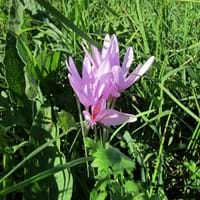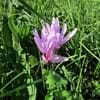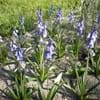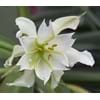Life Span
Perennial
Perennial
Type
Bulb or Corm or Tuber
Tree
Origin
Europe, Turkey, Central Asia, Western Asia
Northeastern United States, Mid-Atlantic United States, Southeastern United States, Central United States, Canada, Mexico
Types
Colchicum cupanii, Colchicum alpinum
Plains Cottonwood, Rio Grande cottonwood
Number of Varieties
Not Available
Habitat
Fields, meadows, Rocky areas, Shaded sites, Woodlands
bottomlands, Floodplain, Hardwood forests, Riverbanks
USDA Hardiness Zone
Not Available
3-9
AHS Heat Zone
Not Available
9-1
Sunset Zone
21,22
1a, 1b, 2a, 2b, 3a, 3b, 4, 5, 6, 7, 8, 9, 10, 11, 14, 15, 16, 17, 18, 19, 20, 21
Habit
Clump-Forming
Upright/Erect
Flower Color
White, Yellow, Purple, Violet
Red, Green
Flower Color Modifier
Bicolor
Bicolor
Fruit Color
Not Available
White
Leaf Color in Spring
Green
Green, Gray
Leaf Color in Summer
Light Green
Green
Leaf Color in Fall
Several shades of Green
Yellow
Leaf Color in Winter
Light Green
Not Available
Leaf Shape
Long Linear
Toothed curved and flat petiole
Plant Season
Spring, Fall, Winter
Summer, Fall
Sunlight
Full Sun, Partial Sun
Full Sun
Growth Rate
Medium
Very Fast
Type of Soil
Loam
Loam, Sand
The pH of Soil
Acidic, Neutral
Acidic, Neutral
Soil Drainage
Well drained
Average
Bloom Time
Early Spring, Late Summer, Early Fall, Fall, Late Fall, Winter, Late Winter
Early Spring
Tolerances
Drought
Drought, Soil Compaction, Wet Site
Where to Plant?
Container, Ground, Pot
Ground
How to Plant?
Divison, Seedlings
Seedlings, Stem Planting
Plant Maintenance
Low
Low
Watering Requirements
Do Not over Water, Medium, Needs less watering, Never Over-water, Requires regular watering, Water less during winter
Keep ground moist, Requires regular watering, Requires watering in the growing season, Water daily during growing season, Water Deeply, Water more in summer
In Summer
Ample Water
Ample Water
In Spring
Less Watering
Ample Water
In Winter
Less Watering
Average Water
Soil pH
Acidic, Neutral
Acidic, Neutral
Soil Type
Loam
Loam, Sand
Soil Drainage Capacity
Well drained
Average
Sun Exposure
Full Sun, Partial Sun
Full Sun
Pruning
Remove damaged leaves, Remove dead leaves, Remove dead or diseased plant parts, Remove shoots
Remove dead branches, Remove hanging branches
Fertilizers
fertilize in growing season, Less fertilizing
fertilize in growing season, Nitrogen
Pests and Diseases
Not Available
Aphids, Borers, Caterpillars, Insects
Plant Tolerance
Drought
Drought, Soil Compaction, Wet Site
Flower Petal Number
Single, Double
Not Available
Foliage Texture
Coarse
Medium
Foliage Sheen
Not Available
Glossy
Attracts
Bees, Butterflies
Not Available
Allergy
Kidney Disease, Low blood pressure, Stomach pain, Toxic, Vomiting
Hay fever, Headache, Runny nose, sneezing
Aesthetic Uses
Landscape Designing
Landscape Designing
Beauty Benefits
No Beauty Benefits
No Beauty Benefits
Environmental Uses
Air purification, No fertilizer, pesticides, or herbicides needed, Prevent Soil Erosion
Air purification, Forms dense stands, Prevent Soil Erosion, Shadow Tree, Shelter for wildlife, Wildlife, Windbreak
Medicinal Uses
anti-cancer, anti-inflammatory, Diarrhea, Diuretic, Rheumatism
Anodyne, Anthelmintic, anti-inflammatory, Febrifuge
Part of Plant Used
Flowers, Leaves
Inner Bark, Leaves, Seeds
Other Uses
Employed in herbal medicine, Showy Purposes, Used as Ornamental plant, Used for its medicinal properties
Biomass for fuel, Used as firewood, Used As Food
Used As Indoor Plant
Yes
No
Used As Outdoor Plant
Yes
Yes
Garden Design
Alpine, Container, Cutflower, Foundation, Lawns and Turf, Mixed Border, Rock Garden / Wall, Wildflower
Screening / Wind Break, Shade Trees
Botanical Name
COLCHICUM
POPULUS deltoides
Common Name
Colchicum
Eastern Cottonwood
In Hindi
colchicum
Eastern Cottonwood
In German
colchicum
Eastern Cottonwood
In French
colchique
Cottonwood Orient
In Spanish
Colchicum
Cottonwood del Este
In Greek
Colchicum
Ανατολική Cottonwood
In Portuguese
Colchicum
Cottonwood Oriental
In Polish
Colchicum
Eastern Cottonwood
In Latin
Colchicum
Orientalium Poplar
Phylum
Magnoliophyta
Anthophyta
Class
Liliopsida
Dicotyledonae
Family
Liliaceae
Salicaceae
Clade
Angiosperms, Monocots
Angiosperms, Eudicots, Rosids
Tribe
Not Available
Not Available
Subfamily
Wurmbaeiodeae
Salicoideae
Season and Care of Colchicum and Eastern Cottonwood
Season and care of Colchicum and Eastern Cottonwood is important to know. While considering everything about Colchicum and Eastern Cottonwood Care, growing season is an essential factor. Colchicum season is Spring, Fall and Winter and Eastern Cottonwood season is Spring, Fall and Winter. The type of soil for Colchicum is Loam and for Eastern Cottonwood is Loam, Sand while the PH of soil for Colchicum is Acidic, Neutral and for Eastern Cottonwood is Acidic, Neutral.
Colchicum and Eastern Cottonwood Physical Information
Colchicum and Eastern Cottonwood physical information is very important for comparison. Colchicum height is 7.60 cm and width 7.60 cm whereas Eastern Cottonwood height is 3,050.00 cm and width 2,130.00 cm. The color specification of Colchicum and Eastern Cottonwood are as follows:
Colchicum flower color: White, Yellow, Purple and Violet
Colchicum leaf color: Green
Eastern Cottonwood flower color: Red and Green
- Eastern Cottonwood leaf color: Green and Gray
Care of Colchicum and Eastern Cottonwood
Care of Colchicum and Eastern Cottonwood include pruning, fertilizers, watering etc. Colchicum pruning is done Remove damaged leaves, Remove dead leaves, Remove dead or diseased plant parts and Remove shoots and Eastern Cottonwood pruning is done Remove dead branches and Remove hanging branches. In summer Colchicum needs Ample Water and in winter, it needs Less Watering. Whereas, in summer Eastern Cottonwood needs Ample Water and in winter, it needs Average Water.





